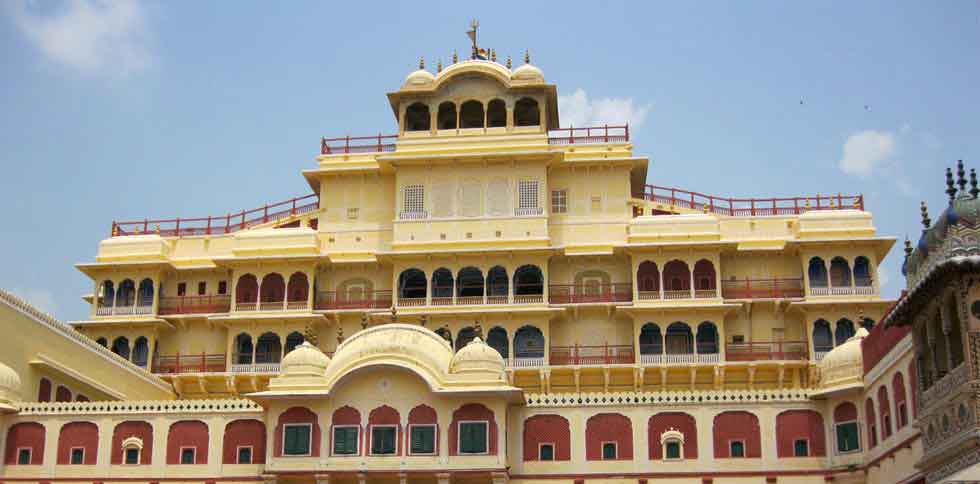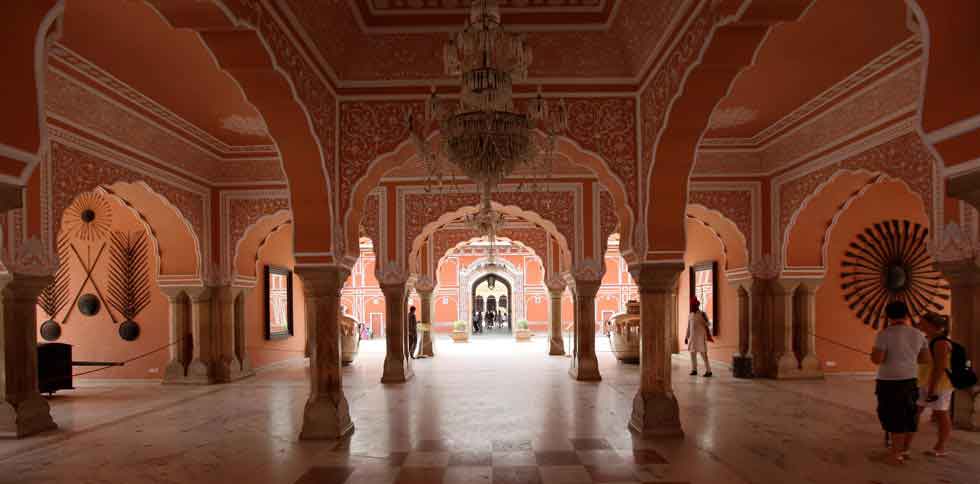Royal City Palace Trip
Location :
Located in the heart of the walled city, The City Palace Complex gives you an idea about the far sightedness of the founder of Jaipur Sawai Jai Singh. He left behind a legacy of some of the most imposing and magnificent architecture, art and craft structure in the city.
About the City Palace Jaipur :
A magnificent structure, the palace occupies one seventh of the walled city of Jaipur and is a wonderful blend of Rajput and Mughal architecture. The City Palace is now converted into a museum, except a small portion that is still used by the royal family. Built in the fortified campus style, the palace covers almost one-seventh part of the city.
Constructions and additions to the palace continued until twentieth century. The palace houses an extensive collection of rare manuscripts, Mughal and Rajasthani miniatures, Mughal carpets, costumes and textiles, arms and weapons, objects of art and royal paraphernalia.
Attractions of the City Palace :
The palace is blend of Mughal and Rajasthani architecture and the royal family still lives in a part of the palace. On entering the complex and before the palace proper lies the Mubarak Mahal, the palace of welcome or reception. Sawai Madho Singh built the palace in the nineteenth century.
Mubarak Mahal, built by Maharaja Madho Singh. It has a beautifully carved marble gate with heavy brass doors on either side of this gate. Beyond this gate, lies the 'Diwan-E-Khas' or the 'Hall Of Private Audience' with a marble paved gallery. Across a paved square lies the 'Diwan-E-Am' or the 'Hall Of Public Audience', with its intricate decorations and manuscripts in Persian and Sanskrit. There is also a clock tower and the newer Mubarak Mahal.
To the north-west is the stately and graceful seven-storeyed Chandra Mahal, the residence of ex-ruler. The seven-story Chandra Mahal is the centrepiece and commands fine views of the gardens and the Jaipur city. The complex contains an excellent museum, an armoury and several fine halls. The apartments are maintained in luxurious order and the museum of Maharaja Sawai Man Singh II has an extensive collection of art, carpets, enamelware and old weapons.
The paintings include miniatures in Rajasthani, Mughal and Persian schools. The armoury dating back to the 15th century and many of the ingenious and tricky weapons, which the warrior Rajputs were famous for. A section of museum also contains dresses and costumes of the former Maharajas and Maharanis of Jaipur. Each storey has a distinctive name and is a place of sheer beauty and luxury. Paintings, floral decorations, mirror walls and ceilings in the traditional style adorn the palace. The uppermost storey is called the Mukut Mahal.
Opposite the Chandra Mahal lies the Badal Mahal. The Govind Devji Temple stands in the middle of the Chandra Mahal and the Badal Mahal. A delightful system of mountains is placed in the middle of the paved path between the Chandra Mahal and the Badal Mahal. The palace has extensive and sprawling gardens.
Outside the buildings, you may see a large silver vessel which a former Maharaja used to take drinking water with him to England. Being a devout Hindu, he could not drink the English water.
Climate :
Summers are quiet warm with temperature rising up to 45 'C and proper care should be taken of water intake to stay fit during these conditions. In winters days are usually fine but during the night time temperature might drop to about 3 'C.
Best time to visit :
Jaipur is during the months of October to February. During this period, the heat of the desert sun is less intense, the weather is cool and it is the best season for going sightseeing. The Elephant Festival and the Gangaur Festival are held in Jaipur at the tail end of March; another good reason to plan a trip as winter is on the wane and summer is yet to set in.
How to Reach :
Air : Jaipur is connected to Delhi (300Km), Mumbai, Udaipur, Jodhpur, Aurangabad, Calcutta and Varanasi by domestic flights.
Rail : The train service to Jaipur is available from all the major parts of the country.
Road : Jaipur can be accessed from all the major places in Rajasthan, Gujarat, Delhi and Mumbai by bus.
YOUR REQUEST FORM
Provide Us Your Details & Requirements To Prepare The Best Tailor made & Customized Tour Itineraries For Agra Taj Mahal India & its Nearby Tourist Destinations
| All Fields marked with (* ) are required. |

